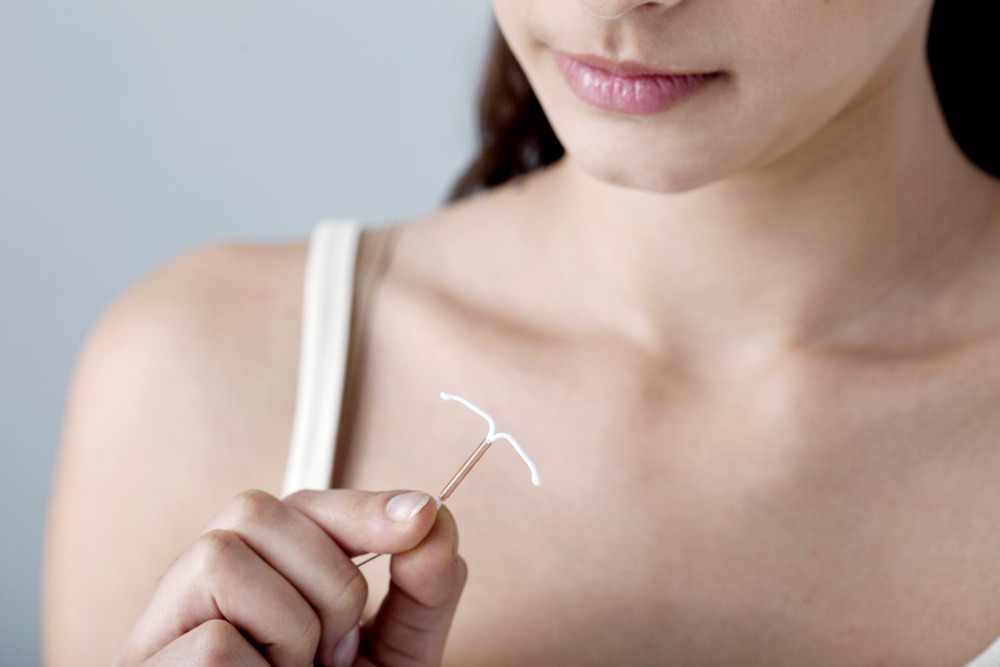
Take a moment to imagine this scenario: you decide to get an intrauterine device (IUD) to be proactive about birth control or to regulate your menstrual cycle, only to be hit with debilitating pain with IUD insertion. To make matters worse, the pain doesn’t stop there. It continues on, long after your appointment, making sex or inserting a tampon painful or even impossible.
This type of pelvic pain is known as vaginismus, a condition that involves the involuntary (and painful) contraction of the vagina with attempted penetration. Maybe you’ve seen the articles or maybe you’ve been through it yourself, but more and more people who decide to get an intrauterine device (IUD) are going through this same situation. And we think it needs to stop.
Part of the problem is the ongoing lack of education around all things pelvic health. Plus, the onus is always on people with uteruses to take care of contraception. We’re told to take this pill or get this device in order to prevent pregnancy, but rarely does anyone explain the true risks or side effects. At Pelvic Pain Doc, we want you to feel fully informed on all things pelvic health so you can make the right decisions for your own body. If you’ve been thinking about getting an IUD and are worried about the risk of vaginismus, read on. In this post, Dr. Sonia Bahlani will discuss:
How IUDs workWhat is vaginismusThe link between IUD insertion and vaginismus
What is an IUD and How Does It Work?
An IUD (also known as a “coil”) is a small, T-shaped contraceptive device that is inserted into the uterus. Most IUDs release the hormone progestin into your bloodstream to prevent pregnancy, but there is a non-hormonal option that uses a copper coil to block sperm from reaching the egg. IUDs are low maintenance (you can set it and forget it) and highly effective, making them a more appealing option than having to remember to take a daily pill. Hormonal IUDs are also often effective for regulating unpredictable menstrual cycles, or alleviating symptoms of endometriosis or PCOS.
The side effects of IUDs, however, can range from non-existent to severe. Many people with the copper IUD report heavier than normal periods and extreme menstrual cramps, even if they never previously had bad cramping with their periods. These side effects are less common with hormonal IUDs but are still possible.
 What is Vaginismus?
What is Vaginismus?
As we mentioned earlier, vaginismus refers to a condition in which the vaginal muscles contract involuntarily with penetration of any kind, including sex, tampons and toys. It can cause extreme, debilitating pain and can interfere with your ability to enjoy your daily life.
While the pain of vaginismus can be unbearable, the psychological toll can be just as difficult. Vaginismus doesn’t have a single identifiable cause, so the condition is often misdiagnosed and mistreated. Many patients are told their symptoms are all in their heads but you heard it here first: this couldn’t be further from the truth! Vaginismus pain is real and it can be treated by a pelvic pain specialist who understands the multifactorial nature of the condition.
It’s also important to acknowledge that the psychological side of vaginismus is a two-way street: the condition is often brought on by trauma or abuse, but the condition can also cause stress and depression. It’s a cycle of pain and emotional distress that requires a holistic approach to break free.
IUD Insertion and Vaginismus: What’s the Connection?
The connection between vaginismus and IUDs comes down to the insertion process. To place an IUD, a doctor will use a speculum to widen the vagina and gain visibility to the cervix. They will then insert the IUD through the cervix and into the uterus. In most cases, patients experience mild discomfort, similar to what you’d feel when having a pap smear. But for some, getting an IUD put in can cause intolerable pain during and after the procedure.
Now imagine you’ve had this painful experience with getting an IUD. It’s only natural that your body will tense up when put into similar situations, such as trying to insert a tampon or attempting penetrative sex. That’s how vaginismus works: your brain sends warning signals to your vagina in anticipation of pain and contracts to literally block the pain before it can start.
Fortunately, most people do not develop vaginismus as a result of an IUD fitting. But it’s impossible to predict how a person’s body will react to the procedure. What we can do is offer more education around contraceptive devices and birth control options so people can make more informed choices for their reproductive health.
And if you are struggling with vaginismus following IUD insertion, don’t lose hope. Through a combination of techniques that considers all facets of vaginismus, Dr. Bahlani can help you overcome your pain and regain your quality of life. Contact Pelvic Pain Doc to book a consultation, or learn more in her new book, “Dr. Sonia’s Guide to Navigating Pelvic Pain: Result-Oriented Strategies for Better Quality of Life.”

